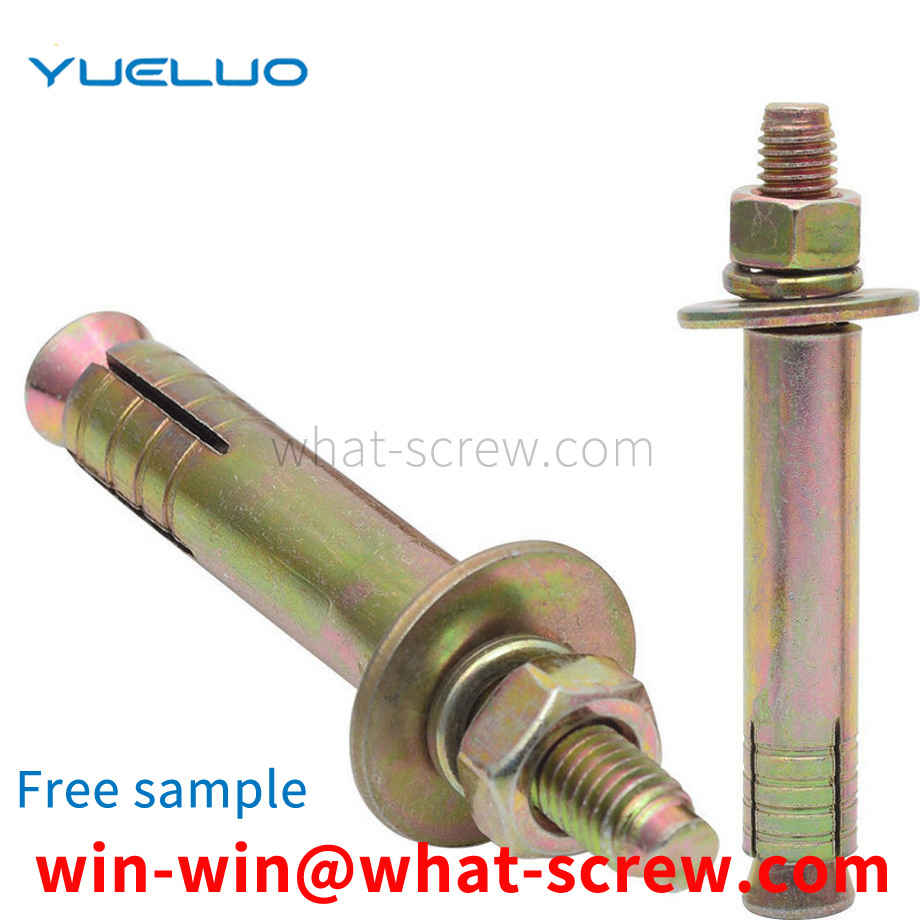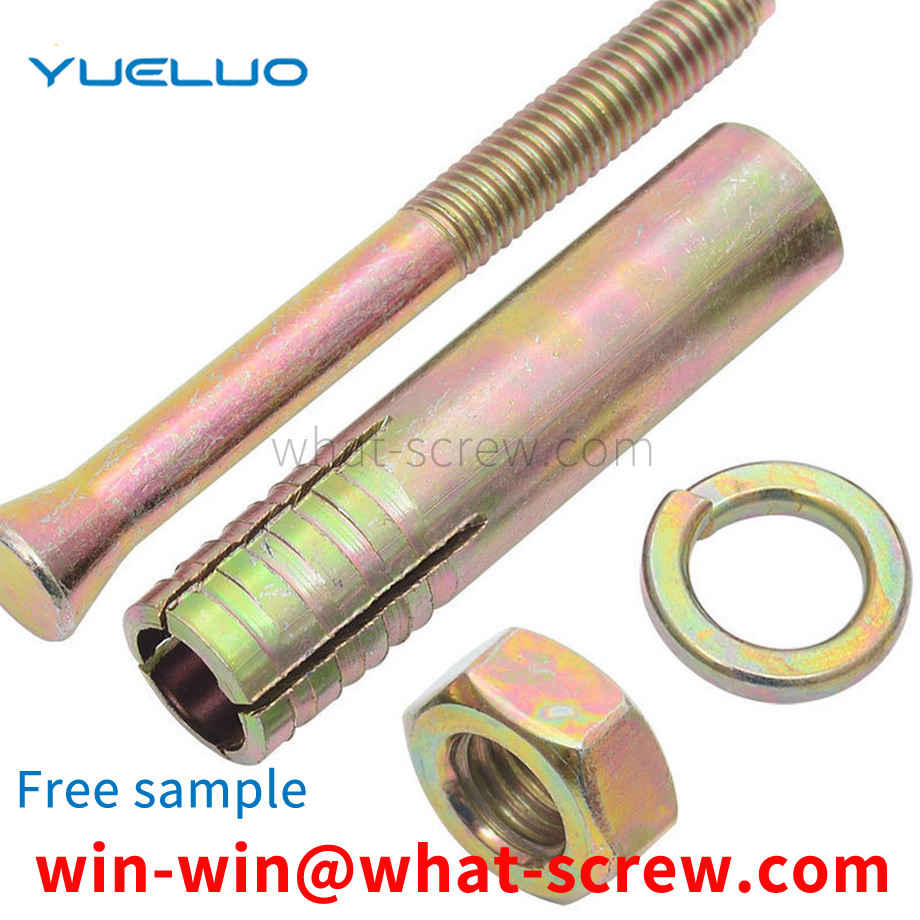Blind rivets (blind rivets) --------- rivet body (rivet body) mandrel (rivet stem or rivet mandrel). It is a type of rivet for single-sided riveting, but it must be riveted with a special tool - a rivet gun (manual, electric, pneumatic). When riveting, the rivet core is pulled by a special rivet gun to expand the rivet body and play a riveting role. This type of rivet is especially suitable for riveting occasions where it is inconvenient to use ordinary rivets (riveting from both sides), so it is widely used in construction, automobiles , ships, aircraft, machinery, electrical appliances, furniture and other products. Among them, the open-type oblate head blind rivets are the most widely used, the countersunk head blind rivets are suitable for riveting occasions where the surface needs to be smooth, and the closed blind rivets are suitable for riveting occasions that require high load and certain sealing performance.
At present, injection molding screws are widely used in various electronic and automotive components, including a body, the middle of which is provided with a through hole 3, the body head 1 has a hexagonal cross-section, and the tail 2 is provided with screw teeth. When in use, the middle through hole 3 of the main body will first put the wire harness, and then fix it by injection molding from the head I, and the threads of the tail 11 should be connected and installed with other components. Because the head I of the main body is hexagonal, the torque provided after injection molding is insufficient. Therefore, after the external thread is installed and connected with other components, the head is prone to slip, the installation is not reliable, and there is no push-pull force, resulting in product failure and increased safety hazards.
The performance grade 8.8 of stainless steel bolts refers to the material's tensile strength limit of 800MPa and yield limit of 640MPa. The performance grades of stainless steel bolts, studs and studs are divided into 10 grades: from 3.6 to 12.9. The number before the decimal point represents 1/100 of the tensile strength limit of the material, and the number after the decimal point represents 10 times the ratio of the material's yield limit to the tensile strength limit. There are 7 grades of performance grades for nuts, from 4 to 12. The numbers roughly represent 1/100 of the minimum stress that the stainless steel nut is guaranteed to withstand. For unified inch threads, there are three thread grades for external threads: grades 1A, 2A and 3A, and three grades for internal threads: grades 1B, 2B and 3B, all of which are clearance fits. The higher the rating number, the tighter the fit. Classes 1, 1A and 1B, very loose tolerance classes, which are suitable for tolerance fits of internal and external threads. Grades 2, 2A and 2B are the most common thread tolerance grades specified for inch series mechanical stainless steel fasteners. Grades 3, 3A and 3B, screwed together to form the tightest fit, suitable for tight tolerance stainless steel standard parts, for safety critical designs. Metric threads, there are three thread grades for external threads: 4h, 6h and 6g, and three thread grades for internal threads: 5H, 6H, 7H. Thread fit is best combined into H/g, H/h or G/h. For bolts, stainless steel nuts and other refined fastener threads, the standard recommends 6H/6g fit. Carbon steel: The strength grade is marked by ? It consists of two separated numbers. The meaning of the number part before the ? in the marking code represents the nominal tensile strength, for example, 4 in grade 4.8 represents 1/100 of the nominal tensile strength of 400N/MM2. The meaning of the ? and the number part after the point in the marking code represents the yield-strength ratio, that is, the ratio of the nominal yield point or the nominal yield strength to the nominal tensile strength. For example, the yield point of grade 4.8 products is 320N/mm2. The strength grade mark of stainless steel products consists of two parts separated by —. The symbol before — in the sign code indicates the material. Such as: A2, A4 and other signs — indicate strength, such as: A2-70 Carbon steel: The mechanical properties of bolts can be divided into: 3.6, 4.6, 4.8, 5.6, 5.8, 6.8, 8.8, 9.8, 10.9, 12.9 in total 10 performance levels
At present, machinery and equipment have gradually become the main force of work production. Many equipment require frequent maintenance and even replacement of parts during use. During the process of maintenance and replacement, it is inevitable to encounter the problem of screw disassembly and assembly. In the process of disassembly and assembly, it is almost necessary to cooperate with both hands, or because the thread is too long, installation and disassembly are very cumbersome. Especially in the butt installation of flanges, bolts and nuts are used for clamping and fixing at this stage. During use, two hands are required to hold a board, a fixed screw, and a screw nut. This is to prevent the nut from During the turning process, the screw also rotates. When screwing, the wrench should be taken down without interruption, re-selected a good position, and then screw the screw forcefully again, and repeated several times before the screw can be unscrewed. Time and labor costs for maintenance are wasted. At present, there is no screw that is easy to install and remove.
As shown in FIG. 1 and FIG. 2 , a rivet die in the prior art includes a set of top die 1 and cover die 2 arranged opposite to each other. The top die 1 is provided with a cavity 1 in the center that matches the shape of the rivet dome head 3-1. -1, the center of the cover mold 2 is provided with a mold cavity 2-1 that matches the shape of the rivet dome head 3-3.
We have many years of experience in the production and sales of screws, nuts, flat washers, etc. The main products are: customized screws, furniture nuts, splint nuts, TA2 titanium washers, GB5783 external hexagon bolts and other products, we can provide you with suitable fasteners solution.



















 Service Hotline
Service Hotline




